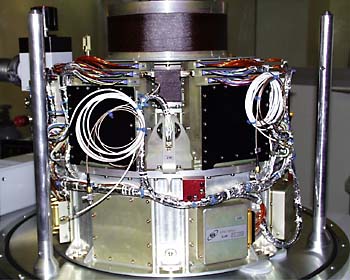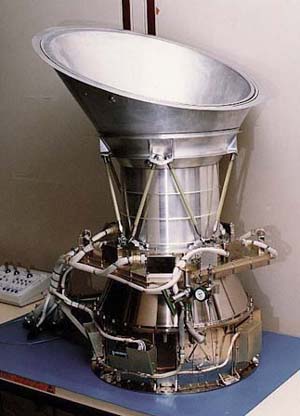

One of the EPIC Camera MOS CCDs. Two of the cameras use this type of metal oxide semiconductor CCD. These detectors register photons in the lower energy portion of the X-ray spectrum with good energy resolution.
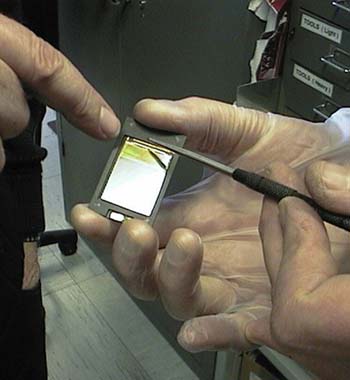
The mechanical assembly of the MOS CCD array. The central CCD is located in the central part of the mirrors' focus, and the surrounding 6 CCDs are set above the central device to better approximate the curved focal plane surface.
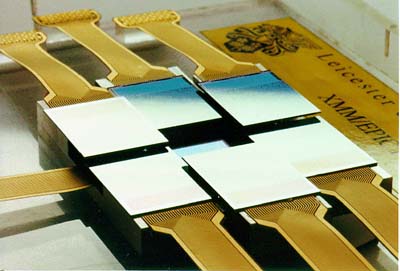
The power and read-out electronics for the 12 CCDs of the p-n camera.
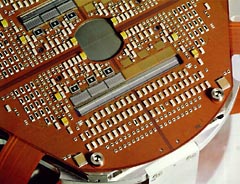
The development of the p-n detector was a seven-year effort by the semi-conductor laboratory of the Max Planck Institute for Extraterrestrial Physics, followed by over two years of integration work and testing on the camera itself. The result is an EPIC p-n detector with a single chip, whose design represents a radical departure from the integrated circuit conception of current MOS CCDs. The p-n detector performs efficient detection of the high energy X-rays.
